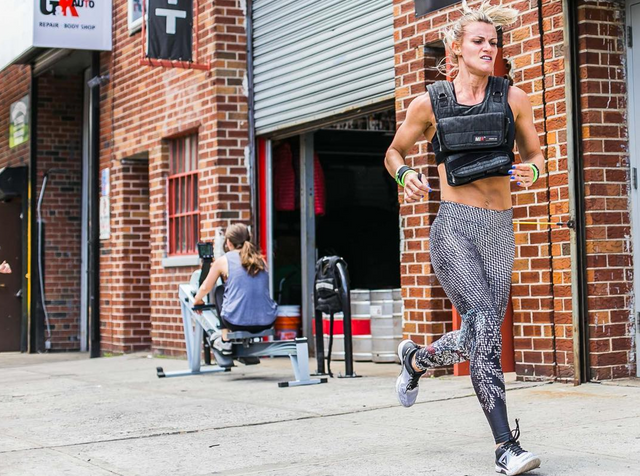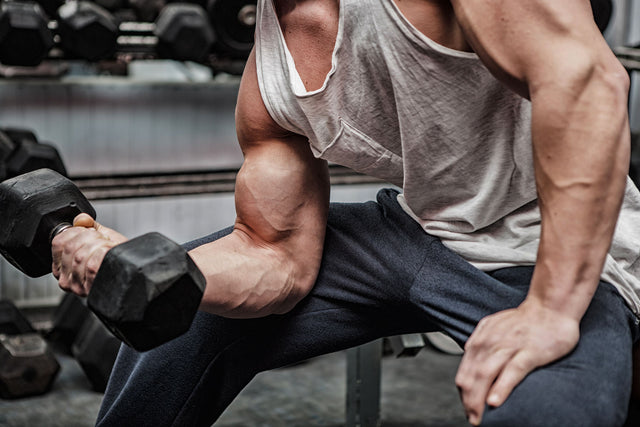Ever find yourself with pee streaming down your leg during a workout? Maybe a little leakage when you sneeze or snatch? You’re not alone and it’s a lot more common than you think (especially during CrossFit). Stress-Induced Urinary Incontinence, also known as the loss of bladder control or peeing during your metcon ranges in severity. It could be an occasional, inconvenient leak to a frantic urge to urinate that is so strong that you fear you might not make it to the bathroom in time.
In this article we’ll discuss:
- What is urinary incontinence?
- What is happening during urinary incontinence?
- Urinary Incontinence In Female Athletes
- The Importance Of The Pelvic Floor
- Why Do Female Athletes Experience Urinary Incontinence?
- Pelvic Floor Exercises
What Is Urinary Incontinence
The urinary incontinence associated with exercise is called stress urinary incontinence (SUI). SUI is the loss of bladder control during intense, physical exercise as well as a simple cough or sneeze.
One study done by researchers in Norway took a closer look at the prevalence of SUI in women on their Norwegian National Team. Out of 600 women, 26 percent recalled instances of an SUI. Surprisingly enough, 49 percent of those athletes fell into the category of having an eating disorder, according to the characteristics listed in the DSM-IV. (1)
One cross-sectional study took a look a the prevalence of SUI in different high-intensity sports. Out of 278 active women, 23.8 percent of those women who claimed to experience incontinence were athletes. The second highest group was female volleyball players, with 19.6 percent experiencing SUI. In conclusion, volleyball players had a 16 percent chance of getting SUI compared to other athletes who played other, less intense sports. (2)
Pee During Your Workout
You’re not the only one, we promise. While urination during exercise isn’t limited to gender, female athletes are more likely to develop SUI, with the intensity of their sport increasing the chance. So what’s actually happening in the body for this to happen?
The female pelvic floor contains fascia, ligaments, and muscles that lie underneath the bladder and uterus. Your fascia is a tensional fluid system -- similar to a sponge. It’s at its healthiest when hydrated. Believe it or not, fascia is actually the largest sensory organ of the body. When it comes to the female anatomy, the endopelvic fascia attaches the bladder, urethra, vagina and uterus to the pelvic walls (3). This connection also extends into the diaphragm. The big breaths you take (changes in lung volume) during a big lift are directly correlated to this area. If you aren’t in control of your breathing, you can lose control of this functionality in your body, leading to leakage and maybe even full on urination.
Urinary Incontinence Causes
- A genuinely weak pelvic floor
- An overactive pelvic floor
- A strong pelvic floor but an imbalanced inner core
Urinary Incontinence In Female Athletes: Weak Pelvic Floor
It may be that simple. If you’re an active female athlete who does a ton of core work, that doesn’t mean you won’t occasionally leak during a movement. After all, the muscles that are giving you your aesthetic six-pack aren’t the same muscles that are responsible for controlling urination. Sorry.
Unlike your abdominal muscles, the pelvic floor muscles are harder to strengthen and train because they’re not as easy to feel. Similar to accessory work, there are a few movements that you can implement to your daily cash out to target the muscles in your pelvic floor. Makes sense, right?
Urinary Incontinence In Female Athletes: Overactive Pelvic Floor
Like any other muscle, when your pelvic floor is constantly active during exercise, the muscles will eventually become fatigued. So when you sneeze or cough later after your workout and leak a bit, it might just be because your body is tired, or fatigued, resulting in them not working as efficiently. If you’re a female athlete, you could be training so much that your pelvic floor is simply in a state of fatigue.
The usual “kegel” exercises thought to strengthen the pelvic floor may actually make symptoms of an overactive pelvic floor worse. Instead, try implementing breathing techniques, accessory movements, working on your posture and trying to prevent an anterior pelvic tilt. We’ll go over this more later.
Urinary Incontinence In Female Athletes: Core & Pelvic Floor Imbalances
Quite possibly you have a strong pelvic floor and a strong inner core (woo!) but you’re still experiencing incontinence. In this case, the issues begin when the two areas of your body become imbalanced.
You can still experience leakage with a stronger inner core but you’re more likely to experience this during explosive movements such as the snatch or clean. You may also experience this if you have a strong inner core but don’t know how to activate it.
The Importance of Strengthening the Pelvic Floor

(Figure 1: The base of the pelvic floor showing Levator ani muscles)
The volume in your lungs will put pressure on all of these structures, previously mentioned, to provide support to them and our lumbar spine as well. Weakness in the muscles found in the pelvic floor could be due to a number of different variables including multiple vaginal births, pregnancies, or basic weakness in general. This holds true especially for sports with high physical intensity, like CrossFit.
Women who have had children may experience bladder control issues the most. However, you might also see it in women new to their respective sport or who are weaker in their lower abdomen area in general. Urinary incontinence occurs when the muscles in the pelvic floor aren’t functioning as a continuous group of muscles. This is when things start to fall apart -- or rather, leak. Research actually suggests that pelvic floor muscles are not strengthened during general exercise or high-intensity training but instead, require specific exercises.
Pelvic Floor Exercises For Urinary Incontinence
Strengthening the pelvic floor doesn’t require any equipment (most exercises don’t) but it does require the ability to identify specific muscles. Go beyond kegels and try these three essential pelvic floor strengthening movements to get stronger, now!
Bridge
Lay down on the ground with your spine touching the ground. Make sure there is no gap between the floor and your lower back. Bend the knees and make sure the feet are flat against the floor, about shoulder width apart. You should be able to touch your hands to your heels in this position. Place your hands next to your side on the floor for stability. Now squeeze the pelvic floor, abdomen and booty as you raise your hips into the air, rolling up onto the shoulder blades like a bride. Hold for a 1-2 count and slowly descend, maintaining contraction in the muscles. Repeat. This movement can also be done as a single-leg bridge, with the feet on an elevated surface, or with a rolled up towel between the knees requiring external contraction.
Clam Shell
Lay on your side, align the hip, knee, and ankle joints together. Have a slight bend in the knee and maintain good posture with your spine. Gently raise one leg into the air, flexing the glute and lower back. Avoid arching or overcompensating with the torso. Lower the knee and leg back to the other, like a clamshell shutting.
Squats
Stop doing kegels and start doing squats. During a squat the pelvic floor talks to the gluteal muscles. As you descend into your squat, make sure you’re tightening and constricting the core and the pelvic floor muscles upwards. Ensure that your knees are not going over your toes and your chest is remaining upright. As you ascend, continue to squeeze and lift the muscles while exhaling.
Urinary Incontinence In Female Athletes: Takeaway
Feeling overwhelmed, hopeless and maybe just downright embarrassed?
Don’t be. Seriously!
Urinary incontinence is extremely common among females, regardless of whether you’re a top athlete or just leading a healthy lifestyle.
You can incorporate pelvic floor exercises into your training. If your pelvic floor is weak, you can strengthen it or learn how to activate it via different exercises. This goes to same for athletes with an extremely active pelvic floor. To prevent fatigue, you can learn how to relax these muscles through a number of techniques and tricks.
Most of all? Breathe and get in touch with your body. It’s capable of amazing things, and if you’re pushing it to the point of peeing, take a step back and try to figure out why. Urinating during exercise isn’t going to cause any serious damage, but it isn’t necessarily a good thing, and it can be avoided!
ABOUT THE AUTHOR
References
Bø K, Borgen JS. Prevalence of stress and urge urinary incontinence in elite athletes and controls. Med Sci Sports Exerc. 2001;33(11):1797-802.Hagovska M, Švihra J, Buková A, Dračková D, Švihrová V. Prevalence and risk of sport types to stress urinary incontinence in sportswomen: A cross-sectional study. Neurourol Urodyn. 2018
Herschorn, Sender. “Female Pelvic Floor Anatomy: The Pelvic Floor, Supporting Structures, and Pelvic Organs.” Reviews in Urology 6.Suppl 5 (2004): S2–S10. Print. [DOWNLOAD PDF]








